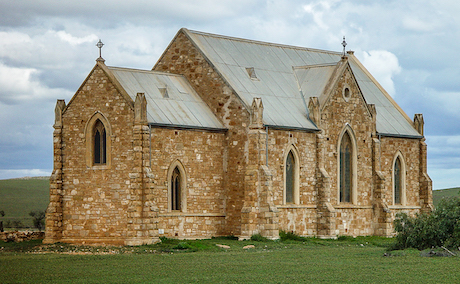Public ideas
Vale Pope Francis
It was inconsiderate of Pope Francis to die in the middle of our election campaign, interrupting us as we deliberated important matters in public life – the price of a litre of gasoline, whether we have to make a co-payment for health care, our fear that immigrants may make us pay a little more for houses, our sense of injustice when a war somewhere in Europe deprived us of a promised $275 reduction in our electricity bill.
Perhaps his death pulled us up for a day or two and made us think about those for whom any form of health care is out of reach, and whose only hope of enjoying the life enjoyed by even the poorest Australians involves a deal with a people-smuggler to cross dangerous seas in a leaking boat. Many commentators on Pope Francis’s life have reminded us that his first visit outside Rome as Pope was to Lampedusa, the port of arrival for African “illegal” immigrants.
The ABC’s Andrew West has gathered five people to contribute to a one-hour broadcast speaking on different aspects of Pope Francis’s life. Frank Brennan, a fellow Jesuit, talks about his geopolitical reach. Phyliss Zagano covers what he achieved, and didn’t achieve, in breaking down gender barriers in the Catholic Church. Cardinal Ignatius Suharyo Hardjoatmodjo of Jakarta and Bishop Shomali of Jerusalem remind us how he reached out to people well outside the church’s traditional European Christian comfort zone. Andrew West’s own post – Pope Francis was a political player who planted himself firmly in three crises – covers much of Pope Francis’s worldwide influence.
It is hard for liberal and progressive Australians, who tend to see sectarianism in the same light as White Australia, as a curse of the past, to appreciate how Pope Francis was seen by American Christians, where a majority of Christians – Catholics and others – voted for Trump. His statements on climate change and the environment, quite in line with conservative Christian teaching, have given rise to deep schisms in the Catholic Church in America.
Two contributions to the Atlantic, The real legacy of Pope Francis by Matthew Walther and Progressive Christianity’s bleak future by Elizabeth Bruenig, provide two American insights on the same person – not a “right-left” or “conservative-progressive” contrast, but a comparison of the different ways Pope Francis came across to the world.
Walther sees Pope Francis not as a radical, but as one who reached back to the Church’s social teachings of the late nineteenth century, namely Pope Leo XIII’s encyclical Rerum novarum. These teachings in their time were influential in forming the ideas of social-democratic parties, including our own Labor Party. For much of the twentieth century, however, the Catholic Church aligned itself with movements on the far right whose philopsophies and practices were quite at variance with the message of the New Testament. Francis was simply taking the Church back to its roots.
Another, deeper, observation on the roots of Pope Francis’s teachings is by James Murray S.J. writing in the Jesuit magazine America: Pope Francis never stopped being a Jesuit. This is effectively an expansion of Frank Brennan’s comments about the Jesuit moral philosophy of discernment.

St Gabriel’s Cradock, deconsecrated 1970
Bruenig considers Christianity in America to be heading in a direction away from the faith Pope Francis championed:
The country has long been headed in a secular direction. But that seems to be changing now—the decline is on pause, and another shift is under way, from a politically varied multitude to a more decidedly right-wing bloc.
That’s about America. The ABC’s Siobhan Marin and Inga Ting have put their presentational skills to a post The changing face of Catholicism in Australia, which shows how the Catholic Church in Australia is changing. In 2021, among overseas-born Catholics in Australia, 54 000 were from Ireland, 71 000 were from India, 134 000 were from Italy, and 217 000 were from the Philippines. It’s not the church that George Pell knew.
The Atlantic has a collection of 25 photographs of Pope Francis, in many of which he is at the focal point of a large crowd. But one that stands out is of him quite alone, walking through the gates of Auschwitz.